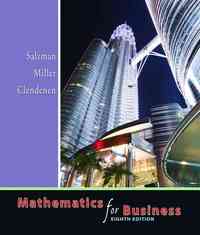HOMEWORK GIZMO PROJECT CAPITAL BUDGETING - Discounted Cash-Flow Analysis & NPV You have to decide whether to accept or reject the following GIZMO project ! Prepare the full DCF/FCF(A) WACC anahats of this project and state clearly: (A) What are the cash flow components (Operating CF, CapEx, ANWC) for each time period ? (8) What are the total free OFs from project assets FCF(A) for each time period ? (C) what is the appropriate discount rate ? (D) What Is the project's NPV and IRR (the rate of return on total invested capital) ? "EJ Should you accept or reject the project and why? Use the following Information to answer the above questions. Your assistants present you with an opportunity in producing "gizmos", induding several market/project analysis inputs. They have already spent $40,000 producing their preliminary technical/marketing/acc analysis. The project would last 3 years. If accepted, you will have to spend $60,000 on a new machinery that will be fully depreciated on a straight-line basis over the next 3 years. Assume It will have zero resale/salvage value in 3 years, The 'gizmos" will be produced in a company-owned building with current market and book values of $200,000. The building can be either used for this project, or used in another project, or sold at that price. The depreciation on this building is $10,000/year. You expect to sell this building in 3 years for its remaining book value. See the table below for information on the expected sales revenue, and various operating cost components. Assume the cash flows occur at the end of each period (e.g., there is exactly one year between TO and T1, with TO meaning "now', and T1 being the end of the initial/first year). Note: To support the sales, you would need some working capital as indicated in the table - the NWC level is $20,000 during the first year, $50,000 during the second, and $10,000 during the third year (timepoints T2 to T3), and as usual, you'll recapture all working funds' by the end of the project, hence the zero at T3. Note on taxes: Assume the firm faced the same 20%% marginal tax rate on all kinds of its taxable income. Also, the firm will have enough taxable income from other unrelated projects In any and all years. Hence, if there is a negative taxable income (and 'negative tax" amount) from this project in any year, that loss does not have to be carried over for tax purposes and can be 'utilized' in that year (no need for any tax-loss carry forward accounting complications). Assume the following. This firm plans to finance this project using capital structure with equal 50% equity and 50% debt financing. The cost of debt is Rd-5%, and the cost of equity is Re=14% (which was already appropriately 'levered" to the assumed leverage D/V=50%). Government bonds yield 4%. Item Time TO T1 12 T3 Sales Revenue $250 $400 $150 Cost-of-goods sold $120 $180 $70 Advertising and other operating expense $30 $80 Net Working capital (NWC level) $20 $10 $20 $50 Capital expenditures ... see the text $10 0 -- all figures in thousands ('000) of USD.THE SOLUTION (use the provided excel spreadsheet to do your cakes, and to submit your HW) !! Total project cash flows CF at: TO . ; T1 . ; 12 ... PART (A & B) : Detailed CASH-FLOWS (figures are in thousands) Time TO T1 T2 13 (0) Operating Cash Flows section 1 Sales Revenue $250 $400 $150 2 Cost-of-goods sold $180 3 Advertising and overhead expense $120 $70 $30 $80 $20 $10 6 7 9 Operating CF (il) CF from changes in Net Working Capital 10 the NWC level $20 11 Change in NWC (its cash flow Impact) $50 $10 0 (ill) Capital Expenditures 12 Building 13 Machinery -200 +170 60 14 CapEx Total Project Cash Flows FCF(A) (C) WACC = We * Re + Wd * Rd * (1-t) = ... (D) NPV = (E) Decision: ?? (accept/reject ??) the project ?? Why








